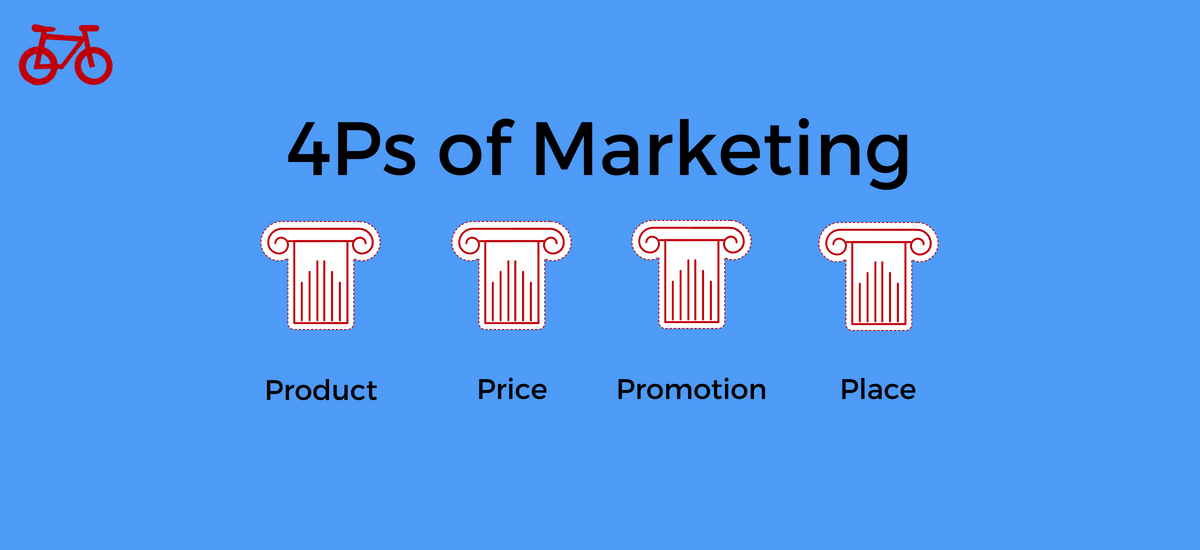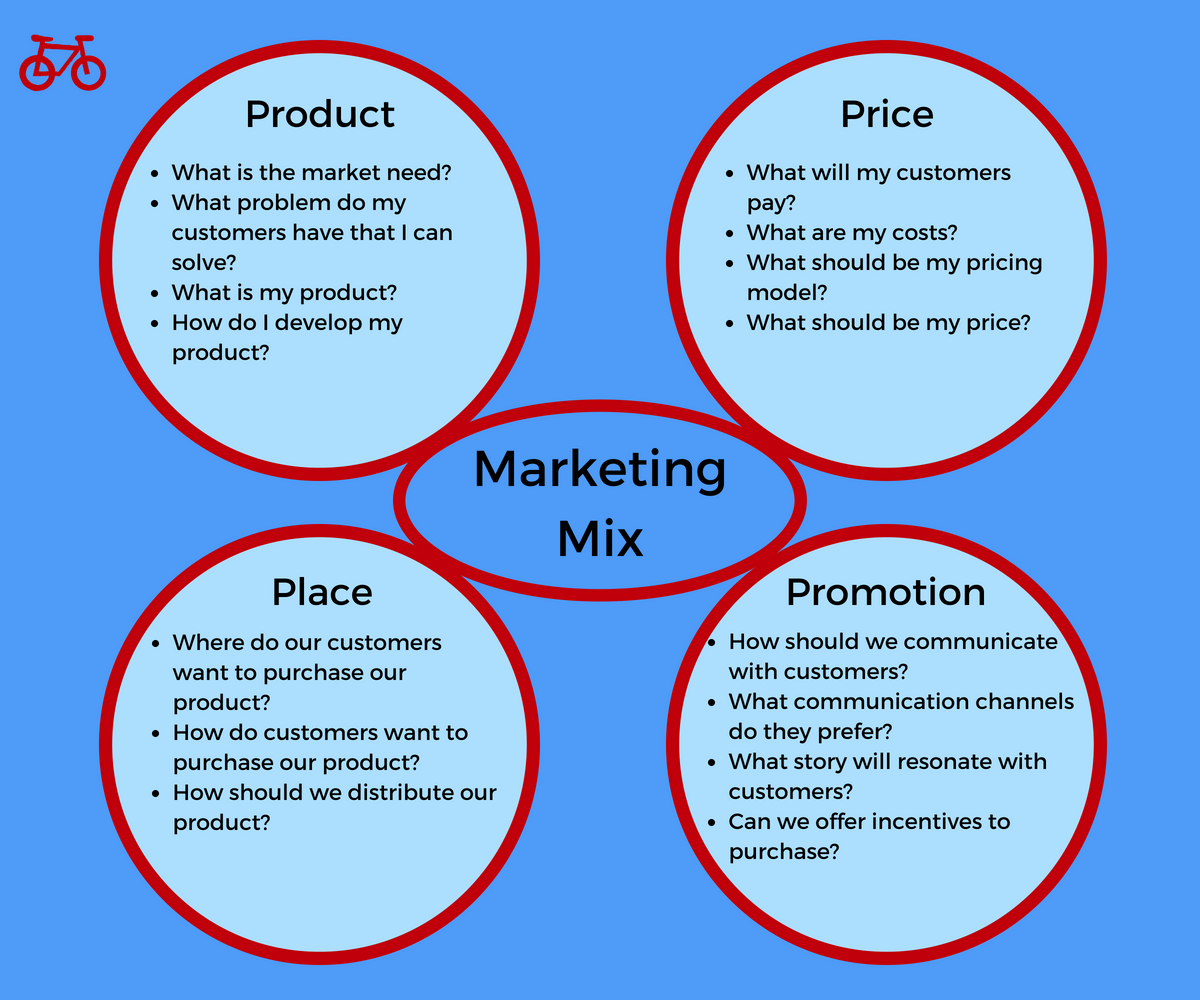Marketing theory and marketing principles are the base of everything we do in marketing. Thus, understanding the principles is crucial to executing an effective marketing strategy.
One of those principles to marketing strategy is the marketing mix. Specifically, the 4Ps model of the marketing mix. This is the traditional marketing mix model and shapes much of how our marketing is executed.
It is the original, and most widely adopted models of the marketing mix. It describes the essential elements for building an effective marketing strategy.
Here, we will take a look at an overview of the 4Ps marketing mix.
What is the 4Ps Marketing Mix?
Simply, marketing is about getting the right product, to the right customer, in the right place, at the right time. This is the widely understood definition of marketing.
With that definition, the marketing mix is this definition of marketing built into an executable model. Which, is the original 4Ps marketing mix.
The 4Ps of marketing are product, price, place, and promotion. Which, these are the four elements of the definition of marketing.
It is these four P’s, that when applied to our marketing, provide the necessary framework to build an effective strategy. A strategy that ensures we are getting our product to the right customers at the right time.
What are the 4Ps of the Marketing Mix?
The 4Ps of the marketing mix are product, price, place, and promotion. This is the framework most commonly used to ensure we are effectively marketing our products. It represents the definition of marketing. And, it is a simple and effective formula, which we can follow in most cases.
The following are the 4Ps of marketing.

Product
A product is a good or service that satisfies a need or want of a target market.
A product is a solution to a markets problem. Which, can come in the form of a physical good, a digital product, or a service.
Another way to define a product is with Kotler and Armstrong. They say a “product means the goods-and-services combination the company offers to the target market”.
Price
Price is what customers pay for a product or service. It is a measure of the value placed on a product, both by the buyer and the seller.
Also, price is a key component in the marketing mix. Being one the most direct ways of communicating value to a customer. Also, price is the one component of the marketing mix that has a direct impact on a product or companies revenue and profitability.
Thus, pricing is the act of determining the price of a given product or service. Using the marketing mix and various pricing strategies and tactics to accurately convey the value of a product or service.
Place
Place, as it pertains to the marketing mix, is the movement of a producers goods to the producers intended user. It is the distribution of your products within the market.
Place can also be called placement or distribution, but all three terms are referencing the same component of the marketing mix.
Another way to think about place is that it is the point of sale.
Place encompasses everything about distributing your product to your users. That means channels, inventory, logistics, market coverage, location, and transportation.
Promotion
Promotion, as it relates to the marketing mix, is all the communication activities a company performs to inform its customers and prospective customers.
Promotion is how companies establish their brand, the company voice, communicate features and benefits, build awareness, and persuade customers and prospective customers.
Since promotion is everything to do with communication, it is often referred to as marketing communication. Thus, the mix of activities may also be referenced as the marketing communications mix.
Promotion is an essential component of the marketing mix and it contains its own set of components.
These are the 4Ps of the marketing mix and their definitions. Within each of these components of the marketing mix, we can build our specific strategies and tactics.
Who Created the 4Ps Marketing Mix?
The marketing mix does not necessarily have one creator but was influenced by many marketers. The marketing mix was referred to by marketers as early as the late 1940s. But, it didn’t become the concrete 4Ps marketing mix model we are familiar with today until much later.
It was not until 1960 that E. Jerome McCarthy proposed the 4Ps marketing mix of product, price, place, and promotion. Prior to this, there was no general consensus among marketers as to the elements of the marketing mix.
Since that proposal in the 1960s, Philip Kotler has been instrumental in popularizing the 4Ps marketing mix. Thus, the 4Ps is the most commonly accepted mix.
Although we can credit one individual for laying out the elements of the marketing mix, we need to look at the history of the marketing mix, as it is not that clear. There is a lot of evolution in the marketing mix. It even continues today.
The History of the 4Ps of Marketing
The history of the marketing mix is not one where the final model was proposed and then used. It progressed over time and did not reach a consensus until long after the concept had begun to be used.
The origins of the marketing mix began as early as the 1940s when Professor James Culliton of Harvard University began referencing the idea of a “marketing mix”. This was the idea used as Professor James Culliton would reference marketers as “mixers of ingredients”. Thus, the idea of the marketing mix was born.
It progressed through the 1940s and 1950s and Professor Neil Borden, who was a colleague of Culliton, also began to use the term in published marketing papers. Bordon is known to have used the term during an address to the American Marketing Association.
As the term “marketing mix” was being used, and the concept of marketers being “mixers of ingredients”, these two references were not combined into a single concept until much later.
It was not until 1960 that all the theories and discussions around the marketing mix were developed into the concrete 4Ps marketing mix we commonly use today. In 1960, E. Jerome McCarthy proposed the 4Ps marketing mix of product, price, place, and promotion. It was then that there was a consensus on the elements of the marketing mix.
Once this was established, Philip Kotler began to popularize this model of the marketing mix, which is the most widely accepted today.
Although we arrived at the 4Ps marketing mix in the 1960s, further marketing mix models were developed. In the 1980s and the 1990s we had the 7Ps marketing mix and the 4Cs marketing mix theories developed. Both use the 4Ps marketing mix as their foundation.
This is a very short history of the 4Ps marketing mix. Which to fully understand the history of this theory, we need to look at the complete history of the marketing mix. But, with this overview, we can understand why there is a marketing mix. Understanding the history and the why helps us to better formulate our own marketing mix strategies.
How to use the 4Ps Marketing Mix
Theories are useful, in that they help form the foundation for the strategies we choose. But, moving from theory, to strategy, to execution is never easy. That is why after looking at a specific theory, we need to figure out how to apply and use it.
This is no different in the marketing mix.
The marketing mix is used in four parts. The four parts provide the pillars for the questions we ask ourselves about our business. Then, we look at the components of each pillar. Lastly, we make all that work together as one cohesive unit.
So, that sounds simple enough. But, we need to look at it in a bit more detail. So, as an overview for executing the marketing mix, here are some questions we should ask in each of the components of the marketing mix.

Product
Building and defining our products is the foundation. Some of the product component questions we should ask are:
- What is the market need?
- What problem do my customers have that I can solve?
- What is my product?
- How do I develop my product?
These are just a few of the questions to consider when planning the product component.
Price
Price, one of the most difficult components of the marketing mix, takes a lot of work to get right. Some of the questions we should ask are the following.
- What will my customers pay?
- What are my costs?
- What should be my pricing model?
- What should be my price?
The questions here are an easy starting point for the price component of the marketing mix.
Place
Place, which is how we get our product in front of our customers, is essentially distribution. So, some of the questions we should consider are:
- Where do our customers want to purchase our product?
- How do customers want to purchase our product?
- How should we distribute our product?
There are many distribution and logistics concerns we need to address in the place component. These are a few introduction questions we can ask ourselves.
Promotion
Communicating with our customers is an important element. If our customers and target market are unaware of us, then we cannot get our product in front of them. Thus, here are a few of the questions we need to ask.
- How should we communicate with customers?
- What communication channels do they prefer?
- What story will resonate with customers?
- Can we offer incentives to purchase?
As we look at promotion we have to consider our message, how we communicate, as well as any incentives we offer. These are questions to get started with the promotion component of the marketing mix.
Using the marketing mix is far more important than discussing it. This is an overview to get started using it as a guiding framework for your business. But, there are far more sophisticated ways to use the marketing mix.
The 4Ps marketing mix is a robust method for planning and executing a marketing strategy. It is the most widely accepted model in marketing. Once we understand the principles of the marketing mix, the history, and the how to execute it, we can build a winning marketing strategy.
